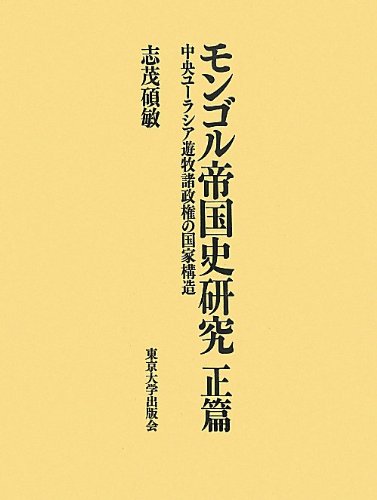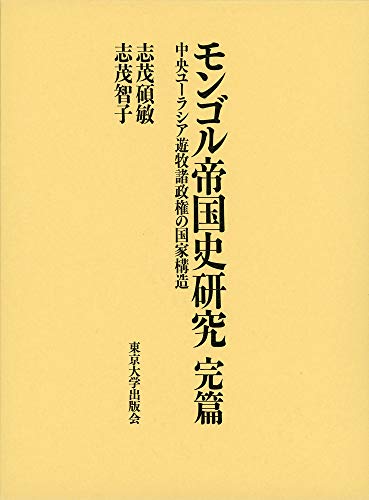4 0 0 0 IR ガザン・カンが詳述するモンゴル帝國遊牧部族連合--モンゴル帝國各ウルスの中核部族
- 著者
- 志茂 碩敏
- 出版者
- 東洋史研究會
- 雑誌
- 東洋史研究 (ISSN:03869059)
- 巻号頁・発行日
- vol.60, no.2, pp.456-405, 2001-09
Faced with imminent dissolution of the Ilkhanate, Ghazan Khan determined that he would reflect on the strong unity of the tribal confederation and embarked on the compilation of a dynastic history simultaneously with the expedition against Syria. Ghazan himself recounted in detail the long-term ties between the hereditary retainers, nokor, amir-ibuzurg, of the various Mongol tribes and the Chinggisid house in the Persian language History of the Mongols, Tarikh-i Mughul. The work is an utterly unique and extremely valuable source providing first-hand knowledge of the inner workings of the nomadic tribal confederation of the Mongol empire in the voice of a Mongol emperor himself, but the various scholars who have gone through the Persian text have failed to comprehend the fundamental structure of the tribal confederation. This has been due to the fact that they proceeded to consider the entire work without comprehending the meaning of the terms buzurg, the Chinggisid house, and amir-i buzurg. hereditary retainers. A close analysis of the long-term ties of the hereditary retainers and the Chinggisid house across the breadth of the Mongol empire reveals the following points. ・The strength of the bonds between the Chinggisid house and individual Mongol tribes was common to each urus of the Mongol empire, and the structure of the Mongol ruling class in each urus was nearly identical. ・Those who served the qa'an and khan, the Chinggisid house, and who held high-ranking and vital posts inherited from their ancestors, and were charged with the management of the urus were retainers from particular lineage groups within special tribes with especially strong bonds to the Chinggisid house, such as fictive kin, fathers-in-law, sons-in-law, tutors (atabek), adopted children, the children of wet-nurses (kukaltash), and subjects who came from families of hereditary vassals who had served Chinggis Khan's ancestors for generations. If Persian language historical sources and those written in Chinese are read with care and insightfully, it will surely become clear that in other nomadic states as well as the Mongol empire and in its successor states, tribal confederations were formed, and the royal family and their fictive kin occupied the core of the political regime.
3 0 0 0 モンゴル帝国史研究正篇 : 中央ユーラシア遊牧諸政権の国家構造
2 0 0 0 モンゴル帝国史研究序説 : イル汗国の中核部族
2 0 0 0 ポストモンゴル期におけるアジア諸帝国に関する総合的研究
- 著者
- 研究代表者 志茂碩敏
- 出版者
- [出版者不明]
- 巻号頁・発行日
- 2002
1 0 0 0 OA Īl Khān国史料に見られるQarāūnāsについて
- 著者
- 志茂 碩敏
- 出版者
- 東洋文庫
- 雑誌
- 東洋学報 = The Toyo Gakuho
- 巻号頁・発行日
- vol.54, no.1, pp.1-71, 1971-06
The “Qarāūnās” mentioned in the sources dealing with the history of the Īl-Khānate was an appellation, after the Khānate, 1258-1335, had been firmly established, for the half-breeds between the twenty-thousand Mongol troops dispatched to, and stationed in Hindūstān and Kashmīr immediately after the accession of Ūktāi Qāān in 1229, and local women.The Qarāūnās, who had been in Hindūstān and Kashmir protecting the flank of the active conquests of Hūlāgū Khān came, toward the end of his reign, 1258-1265, under the command of Abāqā when the prince was dispatched to govern Khurāsān. In 1265 when Abāqā returned to Adherbāijān to take over the Khānship, he took along with him a part of the Qarāūnās, whom he organized into a tūmān, for myriarchy directly under him, with an amīr close to him at its head. This was the “Qarāūnās Tūmān of the Khān’s own” which was under the successive control of influential amīrs close to the Khāns until the reign of Ghāzān Khān,1295-1304.Prince Abāqā, when returning to Adherbāijān, organized into two more tūmāns those Qarāūnās who did not accompany him, to garrison Khurāsān under the command of amīrs loyal to him. These were the “Qarāūnās Tūmāns of Khurāsān.”The Qarāūnās who had made themselves independent along the Eastern borders of the Īl-Khānate by the time when Prince Abāqā was dispatched to govern Khurāsān, continued their plundering raids into the Īl-Khānate territories even after the prince’s accession as Khān.From the reign of Arghūn Khān, 1284-1291, on, the myriarchs of the Qarāūnās Tūmāns of the Khān’s own and of Khurāsān disturbed the Īl-Khānate with their court intrigues and frontier revolts, until finally they were united under Ghāzān Khān.Qārā of qarāūnās derives from qara, black, in Mongolian, while ūnās (ūnā, ūna) appears to be the same name as the Hsiung-nu. Hence qarāūnās means the Black Huns.
1 0 0 0 モンゴル帝国史研究完篇 : 中央ユーラシア遊牧諸政権の国家構造
- 著者
- 志茂碩敏 志茂智子著
- 出版者
- 東京大学出版会
- 巻号頁・発行日
- 2021


